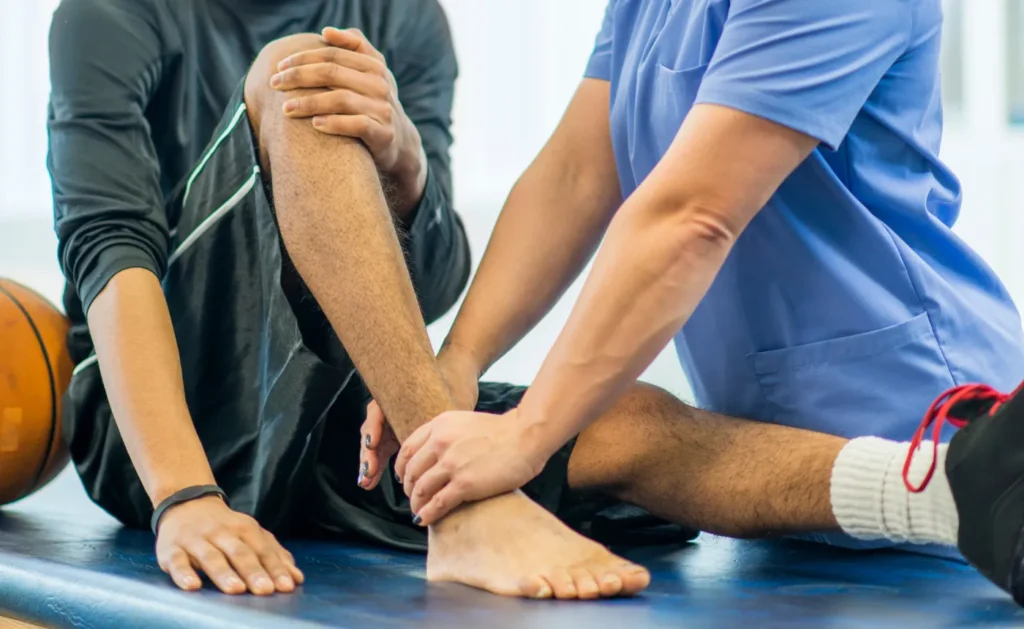A sports injury can range from a minor strain to a severe orthopedic condition requiring specialized care. Understanding the types, causes, and symptoms of sports injuries helps individuals stay active and avoid long-term complications. Here is more information on common sports injuries and the orthopedic treatments available:
What Is a Sports Injury?
A sports injury refers to physical harm or damage to the body that occurs during athletic activities or exercise. These injuries can affect bones, muscles, ligaments, tendons, and other soft tissues. They may result from accidents, poor training practices, improper equipment, or overuse of a specific body part.
The severity of a sports injury can vary greatly. Some injuries may only require a brief period of rest, while others could necessitate long-term rehabilitation or surgery. Understanding the nature of these injuries is the first step toward proper prevention and management.
What Are the Different Types?
Sports injuries are generally classified as either acute or chronic. Acute injuries happen suddenly, such as a sprained ankle from an awkward landing. Chronic injuries develop gradually over time, often due to repetitive motion, like a runner developing shin splints.
Common types of sports injuries include:
- Sprains: Stretching or tearing of ligaments.
- Strains: Stretching or tearing of muscles or tendons.
- Fractures: Breaks in the bone.
- Dislocations: When a bone is forced out of its socket.
- Tendonitis: Inflammation or irritation of a tendon.
What Are the Causes and Symptoms?
The causes of sports injuries are diverse. Overuse, direct impact, and the application of force that is greater than the body part can structurally withstand are common factors. Inadequate warm-ups, incorrect technique, and the use of ill-fitting equipment also contribute to the risk.
Symptoms depend on the type and location of the injury. Common signs include pain, swelling, bruising, and restricted movement in the affected area. A popping sound at the time of injury, weakness, or the inability to bear weight on a limb are also indicative of a potential sports injury.
What Is Orthopedic Emergency Care?
Orthopedic emergency care addresses severe musculoskeletal injuries that require immediate medical attention. This type of care is for conditions like compound fractures, where the bone breaks through the skin, or dislocations that cannot be corrected on the field. Symptoms such as severe pain, visible deformity, or loss of sensation warrant a visit to an emergency facility.
What Treatments Are Available?
Treatment for sports injuries depends on the diagnosis and severity. For minor injuries, the RICE (rest, ice, compression, and elevation) method is commonly used to reduce pain and swelling. This simple approach is effective in managing symptoms during the initial days after an injury.
For more serious injuries, medical professionals may suggest additional treatments. These could include medications, either over-the-counter or prescription, to manage pain and inflammation. Immobilization devices such as braces, splints, casts, or walking boots are often used to support the injured area and promote healing. Assistive devices like crutches may also be provided to reduce weight-bearing on an injured leg or foot.
Other advanced treatments may involve corticosteroid injections to reduce inflammation and pain in specific joints or tendons. Physical therapy is another key component for recovery. It offers structured exercises to restore strength, flexibility, and function to the injured area.
Seek Treatment Today
Prompt and appropriate treatment is key to a successful recovery from a sports injury. Ignoring symptoms or delaying medical care can lead to chronic pain and long-term complications. If you experience a sports-related injury, consulting a healthcare professional for an accurate diagnosis and a tailored treatment plan is advisable for a safe return to activity.

